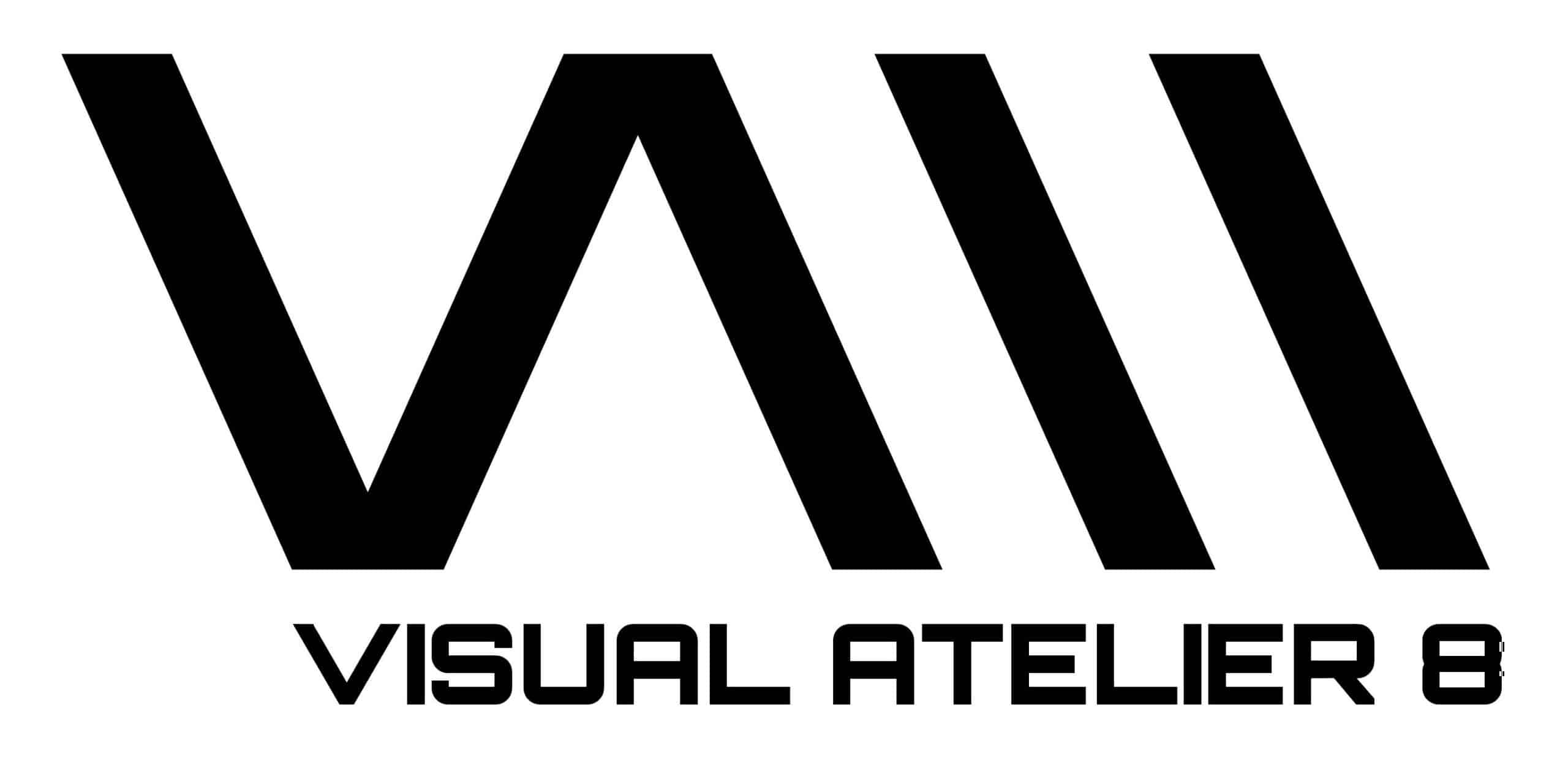
Exploring nature’s intricacies with artist Rogan Brown
Rogan Brown‘s art resides at the confluence of science fact and science fiction, weaving narratives of scientific discovery and innovation into visually captivating creations. As a non-scientist, he translates profound scientific paradigms—ranging from our evolving understanding of bacteria to the complexities of quantum physics—into art, aiming to make these esoteric concepts accessible and relatable. Through intricate paper cuttings, Brown transforms a mundane material into something extraordinary, mirroring how scientific advancements reshape our perception of the familiar.
His work explores the theme of science’s limitations against nature’s vast complexity, depicted through overwhelming detail that mirrors the immense data science must decipher. His large hand-cut pieces, created over months, echo the slow processes of growth and decay in nature, while his use of paper, with its fragility and strength, symbolizes the delicate balance of the natural world. By cutting and transforming paper, Brown poetically reconnects it to its origins, much like the scientific endeavor to explore and comprehend the intricate web of life.
One of the primary objectives of your artistic endeavors is stated as the transcription of nature’s grandeur, rather than merely its duplication. Through this process, you aim to induce a state of contemplation and reflection in the viewer who will then be prompted to pause and ponder the very essence of the natural world. What, precisely, do you hope to achieve within the mind of the observer as a result?
As an artist deeply immersed in the intricate beauty of nature, my primary goal is not merely to replicate its forms, but rather, as you suggest, to transcribe its essence into my artwork. I believe that through this process, I can invite viewers into a state of profound contemplation and reflection that is at once pleasurable and meaningful. When someone engages with my pieces, I hope to awaken within them a sense of awe and reverence for the complexity and interconnectedness of the natural world.
I aim to prompt viewers to pause, to take time to open their eyes and truly see and appreciate the intricacies of life that often go unnoticed in the hustle and bustle of daily existence. In the mind of the observer, I aspire to evoke a sense of wonder and curiosity, encouraging them to delve deeper into the mysteries of the universe. Through my art, I seek to spark a dialogue between humanity and nature, fostering a deeper understanding of our place within the broader ecosystem.
Ultimately, I hope that my work serves as a catalyst for introspection and appreciation, inspiring individuals to cherish and protect the wondrous diversity of life on our planet. By instilling a sense of connection and stewardship, I can to contribute to the ongoing dialogue surrounding environmental conservation and sustainability.


The celestial and microscopic realms mirror each other with mathematically precise symmetries. At a closer glance, the parallels between terrestrial forms and the patterns of the universe become apparent. We, as creations with natural bodies possess the psychological gift of being able to transcend the constraints of what hard reality is through imagination. In your view, what facilitates our ability to mentally transcend what seems fundamentally inescapable? Is imagination solely a matter of identifying and subverting natural laws, or is there something possibly spiritual or philosophical about it?
From my perspective as an artist deeply immersed in the exploration of nature’s intricate patterns and forms, I see imagination as a tool and a process that allows us to transcend what may seem fundamentally inescapable in the natural world. While there are certainly scientific principles and mathematical symmetries that govern the universe, our ability to imagine and conceptualize beyond these constraints is what sets us apart as human beings.
Imagination is not solely about identifying and subverting natural laws; it encompasses a broader, more holistic understanding of the world around us. It allows us to perceive connections and patterns that may not be immediately evident, bridging the gap between the celestial and the microscopic realms. Through imagination, we can envision possibilities beyond our current reality, exploring the depths of philosophical and spiritual realms. There is indeed a spiritual and philosophical dimension to imagination. It enables us to ponder existential questions, contemplate the mysteries of the universe, and grapple with concepts such as consciousness and the nature of reality.
Imagination serves as a gateway to realms of thought that transcend the material world, offering us glimpses into the profound interconnectedness of all existence. In essence, imagination is a multifaceted phenomenon that encompasses both scientific inquiry and philosophical contemplation. It allows us to transcend the boundaries of what is known and explore the infinite possibilities that lie beyond, enriching our understanding of ourselves and the world we inhabit.


Your work utilizes motifs from the sphere of the visible (nature at human scale), but also the invisible world of microorganisms. By dealing with the hidden, your work engages with a longstanding tradition of representing the unseen in art. From early modern Microcosm illustrations to contemporary glass pieces by artists like Luke Jerram, how do you perceive your work as part of this broader cultural fascination with the hidden elements of life?
I think we have to make a distinction between the Unseen in terms of the mystical and the material. Traditionally it has indeed been art that has been responsible for visualizing the Unseen whether by depicting religious or mythological narratives or imaging the psyche and unconscious of the artist. Science reveals the invisible or unseen material world and thanks to the development of scientific imaging technologies, from electron microscopes to orbital telescopes, it has radically altered our vision of nature, expanding it exponentially, perhaps beyond our intellectual capacity to assimilate it.
Science and technology completely dominate contemporary culture and society and so it’s inevitable that artists are going to engage with that fact and make work from it. My work seeks to make sense of this data overload by using simple, accessible craft-based visualization techniques to describe subjects that defy easy conceptualization because of their scale and number: microbial colonies, cell structures or quantum particles to name but a few. By merging surrealist and science-art visual tropes I create hybrid forms that work metaphorically to reflect the way in which scientific information filters through the non-specialists’ imagination. In short I attempt to explore the Unseen in both its mystical and material aspects and merge the two.
Your practice must require ample research seeing that you interact with so many different types of scientific approaches for capturing microscopic or exotic life. Are you the type who travels to locations and collects specimens, or do you skim library archives for illustrations and photographs? What is your preferred method? Or do each hold singular importance’s?
I employ a variety of approaches, including both observing nature directly and delving into library archives for illustrations and photographs. Each method holds its own importance; physical immersion in nature by living in a natural environment and walking every day allows me to observe and interact with the natural world, while archival research provides valuable historical and scientific insights. By combining these approaches, I ensure a comprehensive understanding of the subjects I depict in my artwork.
However it is the historically unprecedented access to scientific imagery thanks to the internet that has been the main engine of my work. For the first time non-specialists have easy access to micrographs and other science-related images which are often reposted, decontextualized, for their aesthetic value alone. Sci-art as a popular genre has, as a result, been born and I’m playing with this new aesthetic.


Given the attention paid to every detail in your work, while drawing or drafting do you ever experience ‘flow states’ (entering into a quasi meditative state of intense but pleasurable concentration?) If yes, is this feeling part of why you do what you do? For many artists this serves a therapeutic function, does it also for you?
Yes, I often experience ‘flow states’ while drawing or drafting, entering into a meditative state of intense concentration. This feeling is undoubtedly part of why I do what I do, as it allows me to immerse myself fully in the creative process and achieve a deep connection with my work. Like many artists, I find this state to be therapeutic, providing a sense of fulfillment and purpose in my artistic endeavors. It is also something that I hope is communicated to the spectator and gives them pleasure, to witness the product of a process of long drawn out mindfulness.
Standing before one of your finished masterpieces have you ever been taken aback by the sudden revealed depths of its beauty? It is said that when a creator’s vision takes on a visual form, it can reveal previously unknown layers of emotional resonance and complexity. More generally but related, what is it about awe that motivates you to continue exploring creatively?
Although the pieces are initially carefully planned, the process of “extruding” the 2D cuts into a finished 3D form transforms them into something other, something unexpected. Every piece ultimately turns out differently from what I expect: they take on and assert a life of their own as they develop and grow. When they are finished I see them as if for the first time and I am taken aback. This feeling of awe motivates me to continue exploring creatively, driving me to push the boundaries of my artistic practice and delve deeper into the mysteries of the natural world.


Your work has a way of evoking awe in those who experience it. How do you navigate the complex intersection where an emotional response to beauty meets the intellectual impact of wanting to produce art in order to prove your own capabilities? What is more important in your process, innovation or viewers response, why?
Navigating the intersection where an emotional response to beauty meets the intellectual impact of producing art to prove my own capabilities is a complex endeavor. In my process, both innovation and viewer response hold significant importance. While innovation drives me to push the boundaries of my creativity and explore new techniques and concepts, the emotional and intellectual impact on viewers is equally crucial.
Ultimately, I strive to create artwork that resonates deeply with audiences, inspiring awe and appreciation for the beauty and complexity of the natural world. This is not such an easy thing to achieve; we live in a world of constant visual bombardment with images scrolling across our retinas at ever increasing speed. Consequently getting people to take time to observe, contemplate and appreciate is becoming increasingly difficult and this has a very profound impact on our relationship with nature. Simply put, if we are unable to appreciate nature we are not going to make the sacrifices necessary to preserve it.
The exhibition titled Sculpting the Senses that showcases works by Iris van Herpen at Musée des Arts décoratifs pays tribute to her pioneering use of new technologies via creative conversation with a selection of the worlds most intricate creatives, you being a great highlight. What are your thoughts on the transformative nature of collaboration and merging new techniques with your already established design sensibility?
I view collaboration as a transformative and enriching experience. Collaborating with artists like Iris van Herpen allows for creative exchange and the exploration of innovative techniques and approaches. By integrating new technologies into my practice and exploring new materials and techniques, I can further expand the possibilities of my artistic expression while maintaining the integrity of my design sensibility. This dynamic dialogue between tradition and innovation fuels my creativity and enables me to continue evolving as an artist.


All images courtesy of Rogan Brown, shared with permission
Rogan Brown website: https://roganbrown.com

